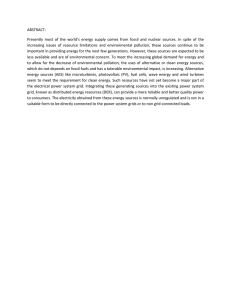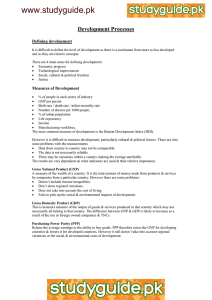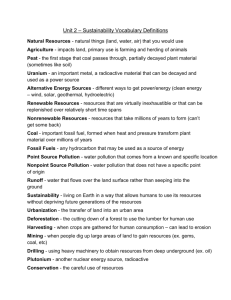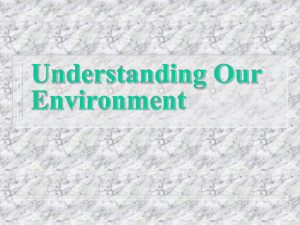Questions for Review 1. environment
advertisement
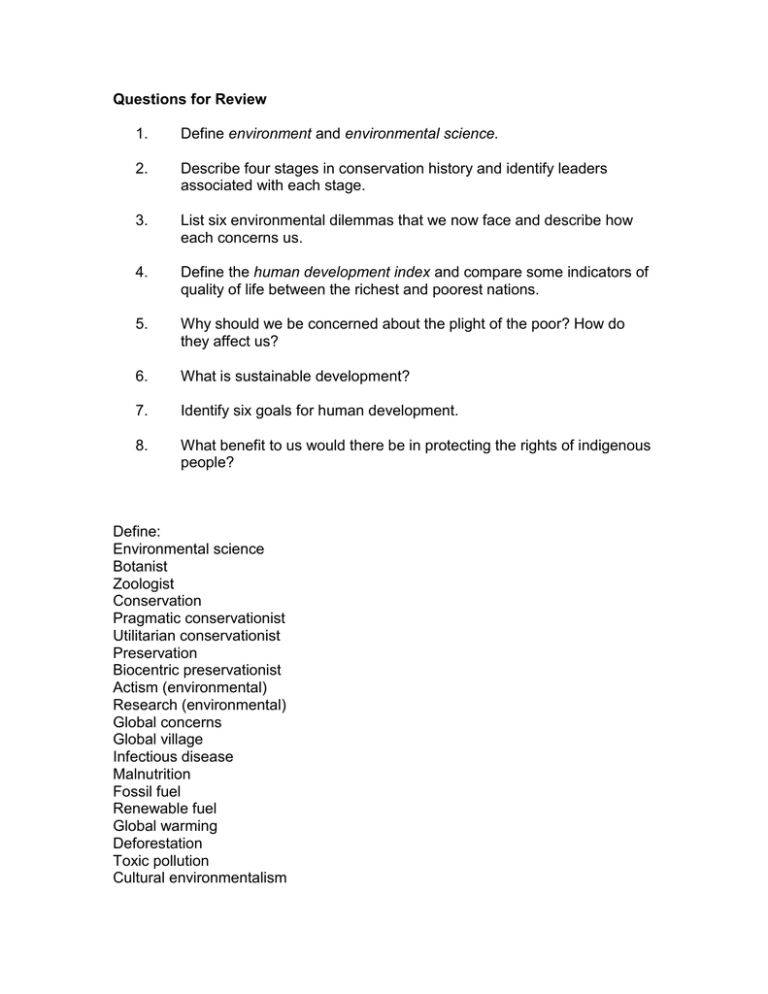
Questions for Review 1. Define environment and environmental science. 2. Describe four stages in conservation history and identify leaders associated with each stage. 3. List six environmental dilemmas that we now face and describe how each concerns us. 4. Define the human development index and compare some indicators of quality of life between the richest and poorest nations. 5. Why should we be concerned about the plight of the poor? How do they affect us? 6. What is sustainable development? 7. Identify six goals for human development. 8. What benefit to us would there be in protecting the rights of indigenous people? Define: Environmental science Botanist Zoologist Conservation Pragmatic conservationist Utilitarian conservationist Preservation Biocentric preservationist Actism (environmental) Research (environmental) Global concerns Global village Infectious disease Malnutrition Fossil fuel Renewable fuel Global warming Deforestation Toxic pollution Cultural environmentalism Consumption Waste Poverty Literacy GNP GDP Birth rate Safe drinking water North/south division Wealth Resource use Race Equator First world Second world Third world Fourth world Sustainable development Economic development Diversity Biodiversity Optimist Technology Technological optimist Cornucopia Cornucopian worldview What is happening to the numbers of species around the world? Amphibians (esp Frogs) are widely studied around the world. What is happening to them? Read the ‘note’ about frogs and frog abnormalities. Be able to describe it. Why are amphibians being used as an indicator of environmental quality? Where does the word ‘environment’ come from? What causes environmental problems? Think about all the ways that the environment is changed, what changes it, and the interactions between all these things. How does this involve the use of critical thinking skills? Environmental Science is the study of the interactions of HUMANs and their environment. Humans change the environment to fit HUMAN needs. The environment then ‘responds’, sometimes in ways that harm humans – think about California mudslides, or CA wildfires. What is the MAJOR advantage that humans have when impacting the environment? Who was Plato? What did Plato say about the environment? When and where did Plato live? Name the other early environmentalists. List them, where they lived, when they lived. Why was each an ‘environmental expert’? What was the training of each? What is Mauritius? What happened there? Who was: Gifford Pinchot? Theodore Roosevelt? John Muir? What kind of ‘conservation’ did these men believe in? What is the difference between the National Park Service philosophy and that of the National Forest? How were these philosophies affected by Pinchot, Roosevelt, and Muir? Who was Rachel Carson? When and where did she live? What did she do that was related to ‘environmentalism? When were pollution problems first noted and related to human health? How does ‘activism and research’ affect David Brower and Barry Commoner? Why does modern environmental thinking include ‘global concerns’? Why is ‘infectious disease’ a ‘global concern’? How is malnutrition connected to infectious disease? What is the world’s current population? Where is most of the world’s current population? What two countries have the most people? Where is the greatest population growth occurring? Why? What causes violent conflicts between groups of people? List the causes. List the main type of fossil fuel used today? Why is it called a fossil fuel? What is happening to supplies of fossil fuels? How would our understanding of environmental processes affect: Global warming Deforestation Toxic pollution List some things that indicate that we are having some success dealing with environmental problems. How are poor people affected by pollution? How do poor people cause pollution? WHY do poor people cause pollution? Why are the Makah tribe members hunting gray whales? What would happen if all the people in the world used resources at the same rate as the people in the USA? Western Europe, North America, Japan, Australia, and New Zealand make up what percentage of the total world population? What percentage of world energy use is used in Western Europe, North America, Japan, Australia, and New Zealand? How is consumption related to waste? How is poverty passed from generation to generation? How is literacy related to birth rates, safe drinking water, and GNP? What is quality of life? How is quality of life measured? Why do the leaders of 3rd world countries NOT want the quality of life of their populations measured? What is meant by the North/South Division? Describe this in terms of wealth, resource use, race, equator, first world, third world and fourth world. Compare and contrast 1st world countries with 2nd, 3rd and 4th world countries. Include: type of government, type of economy, quality of life, literacy, education, gender differences, etc What is the GNP and GDP? How are they related? What is the basis for each? What is the HDI? What are the drawbacks for the GDP, GNP, and HDI? What has happened in recent years with respect to the gap between the rich and the poor? How is sustainable development related to resource use? What do opponents and proponents of sustainable development say? How does sustainable development differ from economic development? Who was Aldo Leopold? When and where did he live? What did she do that was related to ‘environmentalism? What did he say about ‘fear and warnings of ‘doom’? How is this related to the ‘logical errors and fallacies’ from the introduction? Describe the philosophy of the Technological Optimists and the Cornucopian worldview.
